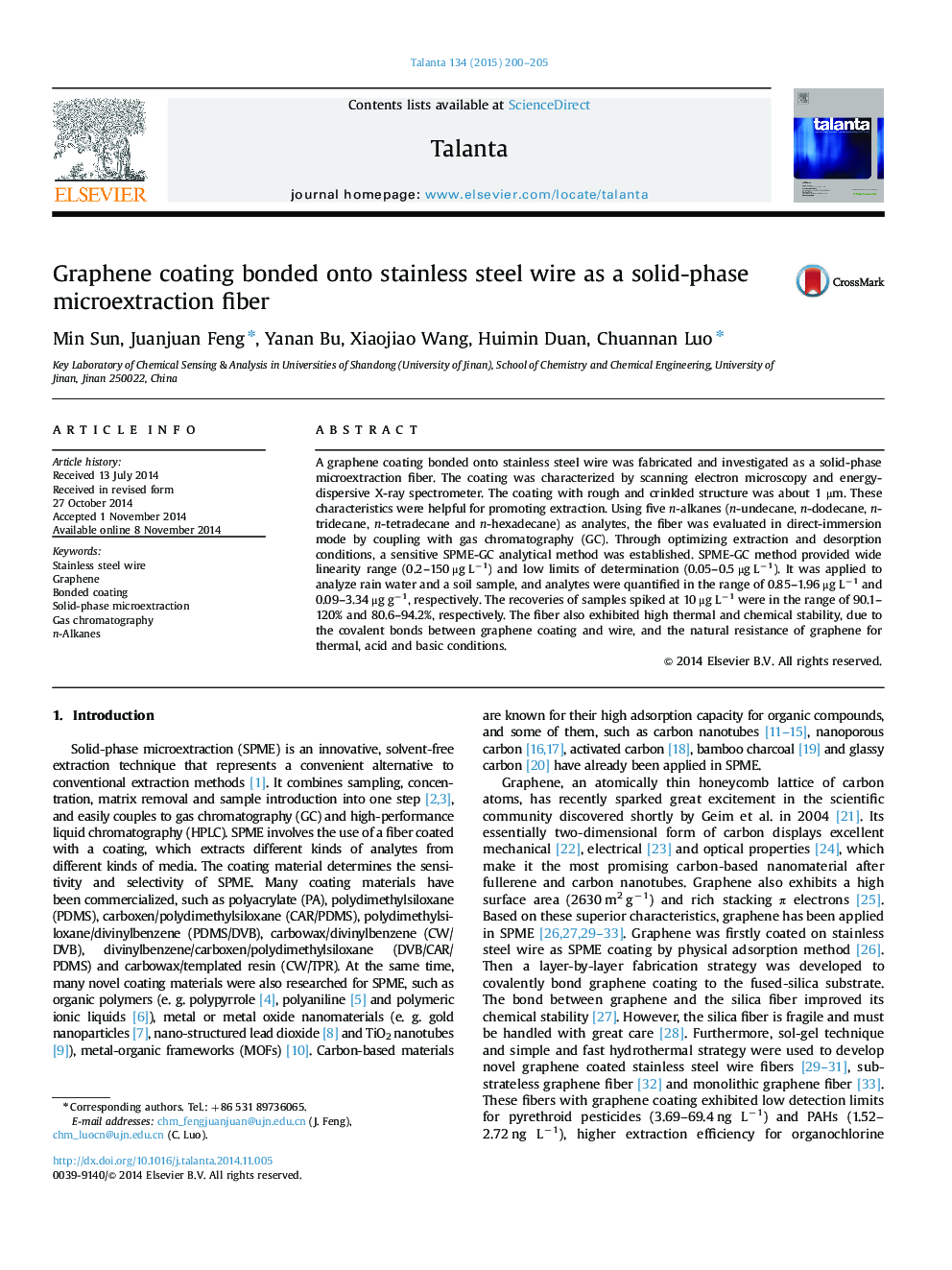| Article ID | Journal | Published Year | Pages | File Type |
|---|---|---|---|---|
| 1244069 | Talanta | 2015 | 6 Pages |
•Graphene coating was bonded onto a stainless steel wire as a SPME fiber.•Electroless plating and layer-by-layer fabrication were used to prepare the fiber.•SPME-GC method provided high sensitivity and wide linear range for n-alkanes.•The fiber exhibited excellent extraction efficiency and high stability.•The chemical bond between coating and wire improved the stability of the fiber.
A graphene coating bonded onto stainless steel wire was fabricated and investigated as a solid-phase microextraction fiber. The coating was characterized by scanning electron microscopy and energy-dispersive X-ray spectrometer. The coating with rough and crinkled structure was about 1 μm. These characteristics were helpful for promoting extraction. Using five n-alkanes (n-undecane, n-dodecane, n-tridecane, n-tetradecane and n-hexadecane) as analytes, the fiber was evaluated in direct-immersion mode by coupling with gas chromatography (GC). Through optimizing extraction and desorption conditions, a sensitive SPME-GC analytical method was established. SPME-GC method provided wide linearity range (0.2–150 μg L−1) and low limits of determination (0.05–0.5 μg L−1). It was applied to analyze rain water and a soil sample, and analytes were quantified in the range of 0.85–1.96 μg L−1 and 0.09–3.34 μg g−1, respectively. The recoveries of samples spiked at 10 μg L−1 were in the range of 90.1–120% and 80.6–94.2%, respectively. The fiber also exhibited high thermal and chemical stability, due to the covalent bonds between graphene coating and wire, and the natural resistance of graphene for thermal, acid and basic conditions.
Graphical abstractFigure optionsDownload full-size imageDownload as PowerPoint slide
